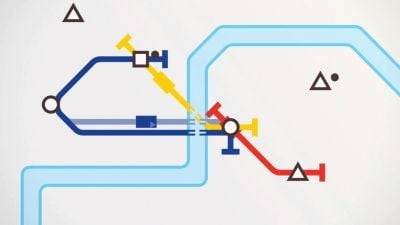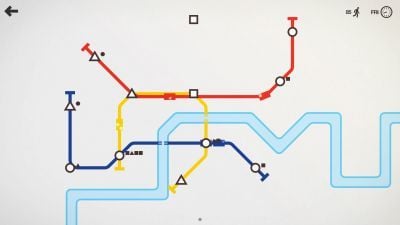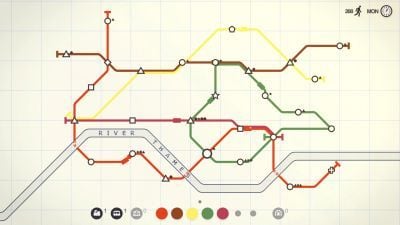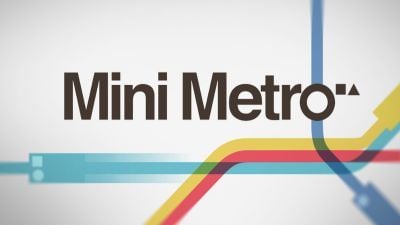
- Mini Metro
- 5.0 Casual Simulation
Advertisement
Description
Apologies for the confusion. Mini Metro is indeed a game that simulates the design and management of a subway system. In Mini Metro, the player's objective is to construct an efficient and functional subway network to cater to the transportation needs of a growing city.
The game starts with a simple setup: a city with a few stations represented by different shapes, such as circles, triangles, and squares. The player is provided with a limited number of subway lines, tunnels, and trains to connect these stations. The goal is to transport passengers from their respective stations to their desired destinations while managing the increasing demands and complexities of the city.
As the game progresses, the city expands, and new stations appear at random locations. The player must adapt to these changes by extending existing subway lines or creating new ones to accommodate the growing population. Stations are represented by shapes that correspond to the type of passengers they generate, such as circles for circular passengers and squares for square passengers. Each station generates passengers at a certain rate, and the player's task is to efficiently transport them to their matching destination stations.
The primary objective in Mini Metro is to keep the subway network functioning smoothly without overcrowding or delays. If a station becomes too crowded and passengers accumulate, the player loses the game. The player must strategically allocate resources, such as trains and tunnels, to balance the demand across the city's stations and prevent congestion.
To further complicate the game, there are limitations on the number of available resources. The player must carefully decide how to allocate trains, tunnels, and lines to maximize efficiency. Each week, the player receives an additional resource to expand their network, allowing for further growth and optimization.
Mini Metro is a game of continuous improvement and optimization. The player's objective is to create the most efficient subway network possible, aiming to transport as many passengers as possible while minimizing travel times and preventing overcrowding. The game provides visual feedback through the movement of trains and the appearance of passenger icons, allowing the player to assess the effectiveness of their network in real-time.
The game's challenge lies in managing the growing complexity of the city, adapting to the random appearance of new stations, and optimizing the network within the constraints of limited resources. Success in Mini Metro is measured by the player's ability to create a well-functioning subway system that can efficiently transport passengers and sustainably manage the ever-increasing demands of the city.
Ultimately, the player's objective in Mini Metro is to test their strategic thinking, problem-solving skills, and ability to manage limited resources effectively. By mastering the art of designing an efficient subway network, players can achieve high scores and unlock additional cities and challenges, further extending the gameplay experience.
Ads
Advertisement
- Verified antivirus
- All link sources on this site are jumped to App Store, Google Play and other official platforms. No virus, no malware.

View on mobile
How to play
Apologies for the confusion. Mini Metro is indeed a game that simulates the design and management of a subway system. In Mini Metro, the player's objective is to construct an efficient and functional subway network to cater to the transportation needs of a growing city.
The game starts with a simple setup: a city with a few stations represented by different shapes, such as circles, triangles, and squares. The player is provided with a limited number of subway lines, tunnels, and trains to connect these stations. The goal is to transport passengers from their respective stations to their desired destinations while managing the increasing demands and complexities of the city.
As the game progresses, the city expands, and new stations appear at random locations. The player must adapt to these changes by extending existing subway lines or creating new ones to accommodate the growing population. Stations are represented by shapes that correspond to the type of passengers they generate, such as circles for circular passengers and squares for square passengers. Each station generates passengers at a certain rate, and the player's task is to efficiently transport them to their matching destination stations.
The primary objective in Mini Metro is to keep the subway network functioning smoothly without overcrowding or delays. If a station becomes too crowded and passengers accumulate, the player loses the game. The player must strategically allocate resources, such as trains and tunnels, to balance the demand across the city's stations and prevent congestion.
To further complicate the game, there are limitations on the number of available resources. The player must carefully decide how to allocate trains, tunnels, and lines to maximize efficiency. Each week, the player receives an additional resource to expand their network, allowing for further growth and optimization.
Mini Metro is a game of continuous improvement and optimization. The player's objective is to create the most efficient subway network possible, aiming to transport as many passengers as possible while minimizing travel times and preventing overcrowding. The game provides visual feedback through the movement of trains and the appearance of passenger icons, allowing the player to assess the effectiveness of their network in real-time.
The game's challenge lies in managing the growing complexity of the city, adapting to the random appearance of new stations, and optimizing the network within the constraints of limited resources. Success in Mini Metro is measured by the player's ability to create a well-functioning subway system that can efficiently transport passengers and sustainably manage the ever-increasing demands of the city.
Ultimately, the player's objective in Mini Metro is to test their strategic thinking, problem-solving skills, and ability to manage limited resources effectively. By mastering the art of designing an efficient subway network, players can achieve high scores and unlock additional cities and challenges, further extending the gameplay experience.
Test banner giữa
Advertisement
Reviews
Tags for this game
Featured Games
Advertisement




































